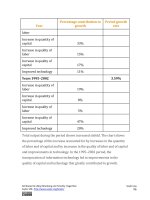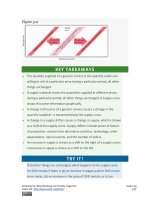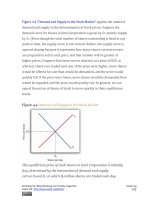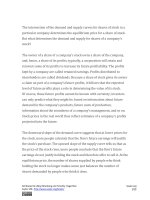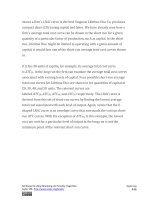Authors libby rittenberg 894
Bạn đang xem bản rút gọn của tài liệu. Xem và tải ngay bản đầy đủ của tài liệu tại đây (447.78 KB, 1 trang )
The exhibit gives a picture of Roadway’s comparative advantage in
trucks and Seaside’s comparative advantage in boats.
Specialization and the Gains from Trade
We have so far assumed that no trade occurs between Roadway and
Seaside. Now let us assume that trade opens up. The fact that the
opportunity costs differ between the two countries suggests the possibility
for mutually advantageous trade. The opportunities created by trade will
induce a greater degree of specialization in both countries, specialization
that reflects comparative advantage.
Trade and Specialization
Before trade, truck producers in Roadway could exchange a truck for half a
boat. In Seaside, however, a truck could be exchanged for five boats. Once
trade opens between the two countries, truck producers in Roadway will
rush to export trucks to Seaside.
Boat producers in Seaside enjoy a similar bonanza. Before trade, one of
their boats could be exchanged for one-fifth of a truck. By shipping their
boats to Roadway, they can get two trucks for each boat. Boat producers in
Seaside will rush to export boats to Roadway.
Once trade between Roadway and Seaside begins, the terms of trade, the
rate at which a country can trade domestic products for imported
products, will seek market equilibrium. The final terms of trade will be
somewhere between one-half boats for one truck found in Roadway and
five boats for one truck in Seaside. Suppose the terms of trade are one boat
Attributed to Libby Rittenberg and Timothy Tregarthen
Saylor URL: />
Saylor.org
894
